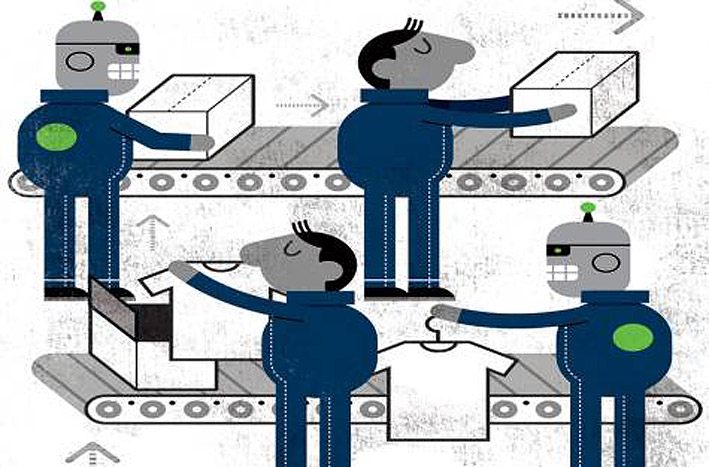
Technology innovators and CEOs seem positively giddy nowadays about what the future will bring. New manufacturing technologies have generated feverish excitement about what some see as a Third Industrial Revolution.
In the years ahead, technological improvements in robotics and automation will boost productivity and efficiency, implying significant economic gains for companies. But, unless the proper policies to nurture job growth are put in place, it remains uncertain whether demand for labour will continue to grow as technology marches forward.
Recent technological advances have three biases: They tend to be capital-intensive (thus favouring those who already have financial resources); skill-intensive (thus favouring those who already have a high level of technical proficiency); and labour-saving (thus reducing the total number of unskilled and semi-skilled jobs in the economy).
The risk is that robotics and automation will displace workers in blue-collar manufacturing jobs before the dust of the Third Industrial Revolution settles.
The rapid development of smart software over the last few decades has been perhaps the most important force shaping the coming manufacturing revolution. Software innovation, together with 3D printing technologies, will open the door to those workers who are educated enough to participate; for everyone else, however, it may feel as though the revolution is happening elsewhere.
Indeed, the factory of the future may be 1,000 robots and one worker manning them. Even the shop floor can be swept better and cheaper by a Roomba robot than by any worker.
For the developed countries, this may seem like old news. After all, for the last 30 years, the manufacturing base in Asia’s emerging economies has been displacing that of the old industrial powers of Western Europe and North America. But there is no guarantee that gains in service-sector employment will continue to offset the resulting job losses in industry.
For starters, technology is making even many service jobs tradable, enabling them to be offshored to Asia and other emerging markets. And, eventually, technology will replace manufacturing and service jobs in emerging markets as well.
Today, for example, a patient in New York may have his MRI sent digitally to, say, Bengaluru, where a highly skilled radiologist reads it for one-quarter of what a New York-based radiologist would cost. But how long will it be before a computer software can read those images faster, better, and cheaper than the radiologist in Bengaluru can?
Likewise, in the next decade, Foxconn, which produces iPhones and other consumer electronics, plans to replace much of its Chinese workforce of more than 1.2 million with robots. And soon enough voice recognition software will replace the call centers of Bengaluru and Manila.
Job-reducing technological innovations will affect education, health care, government, and even transportation. For example, will we still need so many teachers in the decades to come if the cream of the profession can produce increasingly sophisticated online courses that millions of students can take?
If not, how will all of those former teachers earn a living?
Governments, too, are shedding labour — particularly governments burdened by high deficits and debts. And, by transforming how services are provided to the public, the e-government trend can offset the employment losses with productivity gains.
Even transportation is being revolutionised by technology. In a matter of years, driverless cars — courtesy of Google and others — may render millions of jobs obsolete.
And, of course technological innovation that is capital-intensive and labour-saving is one of the factors — together with the related winner-take-all effects — driving the rise in income and wealth inequality. Rising inequality then becomes a drag on demand and growth (as well as a source of social and political instability), because it distributes income from those who spend more (lower- and middle-income households) to those who save more (high-net-worth individuals and corporate firms).
Obviously, this is not the first time the world has faced such problems, and the past can help to serve as a model for resolving them. Late 19th- and early 20th-century leaders sought to minimise the worst features of industrialisation.
Child labour was abolished throughout the developed world, working hours and conditions became more humane, and a social safety net was put in place to protect vulnerable workers and stabilise the (often fragile) macroeconomy.
As we begin to seek enlightened solutions to the challenges that the Third Industrial Revolution presents, one overall theme looms large: The gains from technology must be channelled to a broader base of the population than has benefited so far.
That requires a major educational component. In order to create broad-based prosperity, workers need the skills to participate in the brave new world implied by a digital economy.
Even that may not be sufficient, in which case it will become necessary to provide permanent income support to those whose jobs are displaced by software and machines. Here, too, we should attend carefully to the lessons of the past.
Source: Gulf Business

The May 2018 issues of Business Chief Middle…

The UAE government is going full steam ahead…

The country improved from 6th globally in 2015…